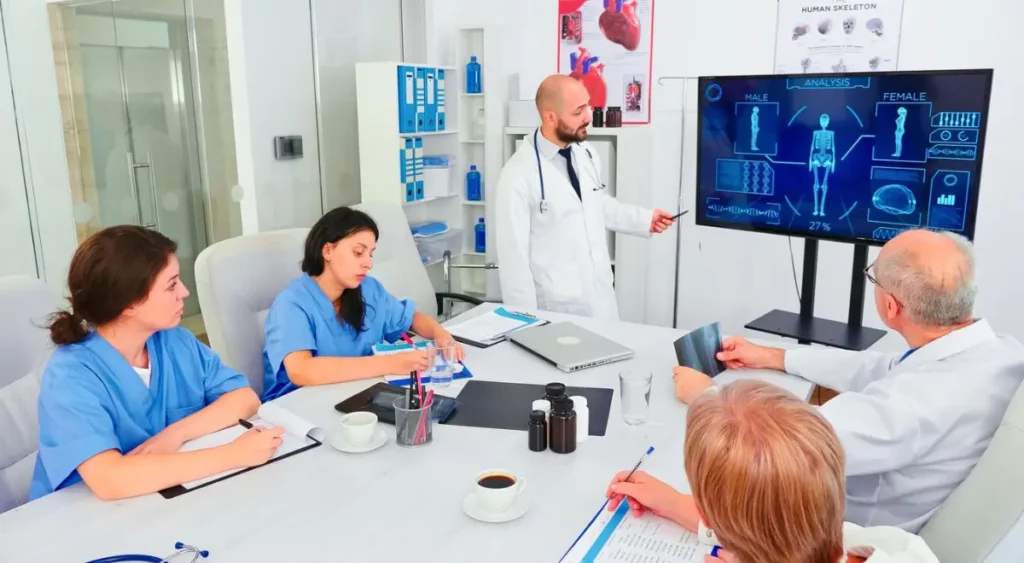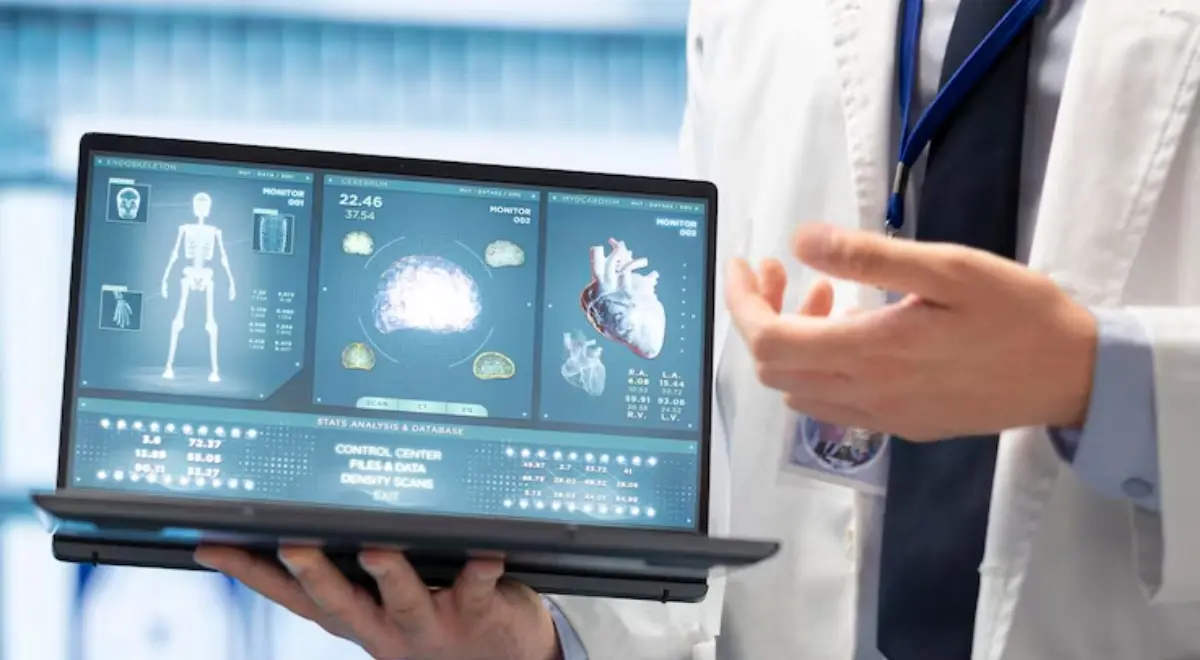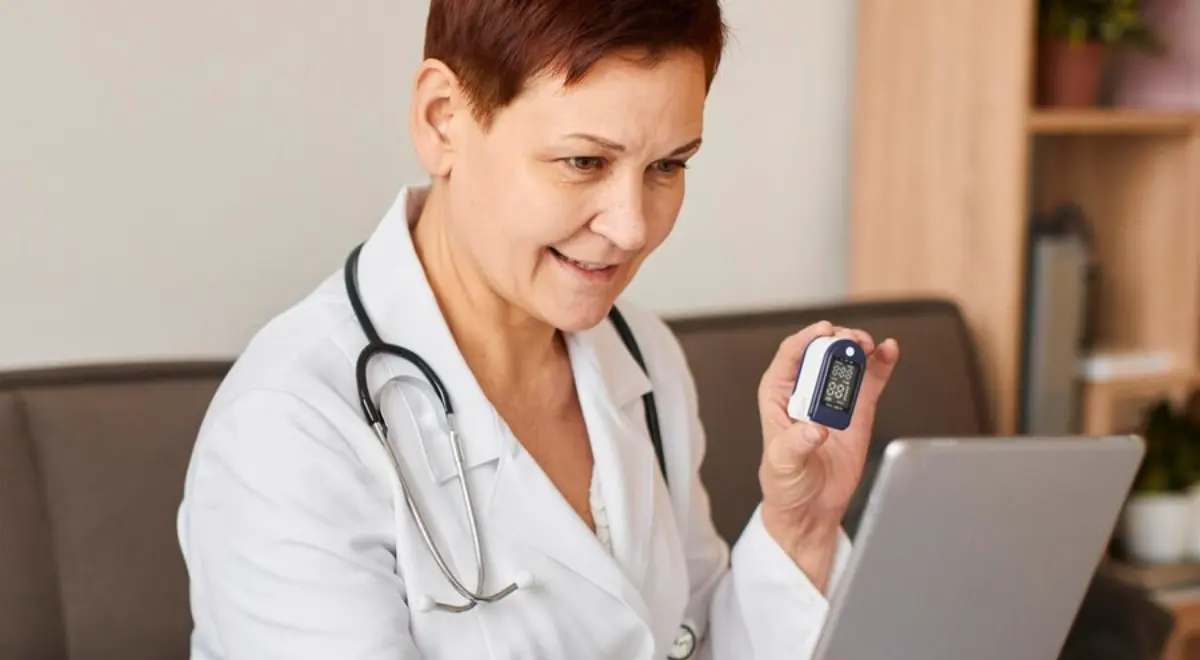RPM and TCM: The Future of Healthcare for Providers

The healthcare business is undergoing considerable transition, fueled by technological developments and a desire to improve patient care. Remote Patient Monitoring (RPM) and Transitional Care Management (TCM) are two of the many innovations that are redefining healthcare delivery. These two healthcare programs improve patient outcomes and streamline provider processes, paving the way for a more efficient, patient-centered approach.
In this blog post, we’ll look at RPM and TCM, how they function, and their benefits to providers.
Table of Contents
ToggleWhat Is Remote Patient Monitoring?
Remote Patient Monitoring (RPM) is a remote care program that helps providers in monitoring patients’ vitals via FDA approved and connected devices. It is rapidly gaining popularity because of the constant and convenient remote healthcare it provides, as well as the promise of revolutionary virtual care innovations. The present and future of this remote care service are powered by artificial intelligence and machine learning technology, which allows for accurate predictions and analysis.
RPM goes beyond chronic illness treatments to include post-operative care, mental health monitoring, and preventive wellness initiatives. Wearable technology advancements will result in more user-friendly devices, while data security measures will ensure secure data transmission and storage.
What Is Transitional Care Management?
Transitional Care Management (TCM) is a healthcare delivery approach that focuses on ensuring patients receives continuity of care while they move from one care setting to another, such as from a hospital to a home or skilled nursing facility. TCM aims to reduce the risk of complications, readmissions, and avoidable hospital visits.
TCM often entails coordinating care among several healthcare practitioners, developing a care plan for the patient, and providing education and support to the patient and their caregivers. It may also include remote monitoring and follow-up visits to check that the patient is doing well and has the necessary resources to manage their disease.
How RPM and TCM Improving Remote Healthcare?
Though the way RPM and TCM work are different, so is their implementation strategy, both are focused on a common goal of improving patient outcomes and care delivery efficiently. If both these remote care services are implemented in collaboration, they will transform patient care and engagement. Here are few ways they are going to benefit healthcare providers in meeting their healthcare delivery goals:
- Continuous Monitoring During Transitions: Transitional care management focuses on after discharge care and RPM focuses on continuous monitoring. When performed in sync, they both enable healthcare providers to stay informed about a patient’s regular health status with 24/7monitoring and the way they are transitioning after leaving the hospital.
- Improved Patient Engagement and Compliance: RPM boosts patient engagement by encouraging chronically ill patients to play an active role in managing their health, while TCM ensures they are well-informed and get the right support during their recovery process. This combination enhances patient engagement and improves adherence to treatment plans.
- Reduced Healthcare Costs: Both RPM and TCM can help reduce healthcare costs by minimizing the need for emergency room visits, unnecessary hospitalizations, and readmissions. By providing patient education materials and continuous care and support, providers can keep the healthcare costs down.
Reducing Rehospitalizations with RPM and TCM
Both patients and healthcare providers want to avoid hospital readmissions after receiving inpatient care. Hospital readmissions can have a negative emotional impact on patients, including feelings of disappointment, anger, and stress.
Not only this, but readmissions are also no less than a financial burden that costs healthcare systems and insurers billions of dollars each year. With readmissions, patients need to leave the least expensive treatment option, i.e. their homes, and return to the most expensive healthcare facilities. Even hospitals have to suffer financially as in few cases they are not reimbursed and, in some cases, penalizedfor treating patients who are readmitted within 30 days.
Many healthcare organizations are now implementing RPM with TCM to enhance patient comfort and standard of in-home care for acute patients and the transition of care from hospital to home for chronically ill patients.
RPM and TCM Are The Future Of Healthcare
With the introduction of remote care programs like remote patient monitoring, chronic care management, transitional care management, principal care management, and remote therapeutic monitoring, the future of healthcare is way better than its now. With a focus on patient-centered care, these programs provide an opportunity to improve care delivery, boost patient outcomes, and enhance operational efficiency for healthcare providers.
RPM and TCM combine continuous monitoring with comprehensive care during transitions to give a holistic strategy that addresses every step of a patient’s healthcare journey.
As the healthcare industry continues to embrace digital health solutions and value-based care, RPM and TCM will be at the forefront of driving the healthcare change. Providers who adopt these models will be well-positioned to meet the demands of modern healthcare, while delivering quality care that is both cost effective and patient focused.
Drive Into the Future of Healthcare with HealthArc
RPM and TCM are advanced care solutions that allow healthcare providers to develop long-term, clinically sophisticated, and trust based virtual relationships with their patients.
HealthArc’s all-in-one remote patient monitoring software enables clinicians to remotely interact with their patients, improve reimbursements, organize billing, and reduce documentation while improving clinical efficiency. Our HIPAA-compliant software ensures that you follow the policies and stay organized for billing the right CPT codes.
Healthcare practices can keep track of their staff productivity, billing information, and a variety of other patient and clinical reports, along with seamless integration with all major EHRs via HL7 and FHIR capabilities.
Schedule a free demo today or call us today at (201) 885 5571 to learn how we can help you achieve the desired outcomes for your clinical practice.
Most recent blogs
Categories
- Advanced Primary Care Management
- Behavioral Health Integration
- Cellular Remote Patient Monitoring
- Chronic Care Management
- Chronic Care Management Billing
- Chronic Care Management CPT Codes
- Chronic Care Management Program
- Chronic Care Management Software
- Digital Health Platform
- Principal Care Management
- Principal Care Management CPT Codes
- Remote Care Programs
- Remote Monitoring Devices
- Remote Patient Care
- Remote Patient Monitoring
- Remote Patient Monitoring Billing
- Remote Patient Monitoring CPT Codes
- Remote Patient Monitoring Devices
- Remote Patient Software
- Remote Therapeutic Monitoring
- Remote Therapeutic Monitoring Billing
- Remote Therapeutic Monitoring CPT Codes
- Telemedicine & RPM
- Transitional Care Management
- Transitional Care Management Billing
- Transitional Care Management CPT Codes
Related Posts
- March 4, 2025 | Read Time: 8 mins
Infrastructure Frameworks for Effective Remote Patient Monitoring (RPM)
- March 1, 2025 | Read Time: 6 mins
AI in Remote Patient Monitoring: Predictive Analytics, Early Detection, & Personalized Care
- February 25, 2025 | Read Time: 5 mins






